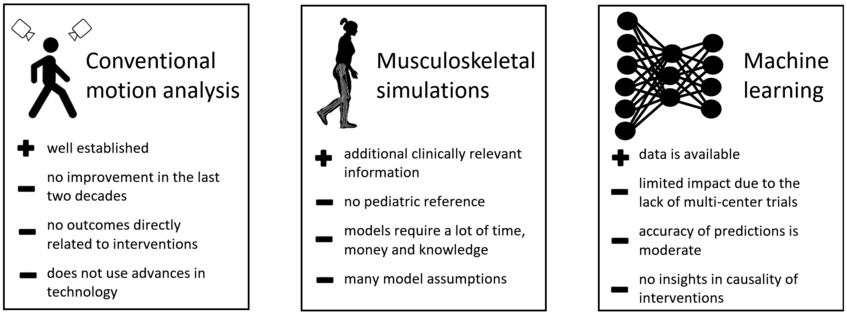MODEL-CP
Information about the project
What is CP?
Cerebral palsy (CP) is a neurological condition that affects approximately 2-3 in 1,000 live births in Europe. It is non-progressive, but its symptoms can change over the course of a person's life. The causes of this condition are brain injuries that can result from a lack of oxygen, infections, or brain malformations. If a child, for example, starts walking late or shows signs of muscle weakness, a diagnosis may be suspected. The condition and the resulting muscle weakness often lead to an altered gait pattern. Among other things, this abnormal loading causes the thigh bones to grow in a twisted manner, which can lead to significant walking difficulties after a few years.
There is currently no cure for CP. Therefore, in cases where the bones are severely twisted, most patients undergo a major surgical procedure in which the bone is cut, properly rotated, and screwed back together. Unfortunately, this surgery improves walking ability in only 42% of children.
What do we want to achieve?
Our vision is to better understand the interaction of the individual factors that make up CP, in order to predict which intervention will lead to an improvement for whom. This way, we aim to reduce the number of surgeries and potentially avoid them altogether in the future. Our approach focuses on identifying pathological patterns in the parameters that define gait at an early stage, so that preventive measures—such as gait training—can be taken to correct abnormal loading and avoid surgery.
The study is planned for a duration of 4 years and began in April 2025. It is funded by the FWF (Austrian Science Fund).
How?
The entire study is based on extensive, retrospective patient data, which will be used to develop a machine learning model. Through musculoskeletal simulations, we are able to estimate internal loads and muscle lengths. This model is intended to help physicians determine the ideal therapy for each child by considering the interaction of many different factors.

The individual factors used to support medical decision-making each have their strengths and limitations. The MODEL-CP project aims to combine these factors to create the best possible multidisciplinary approach, making decisions regarding surgeries and other interventions easier.

